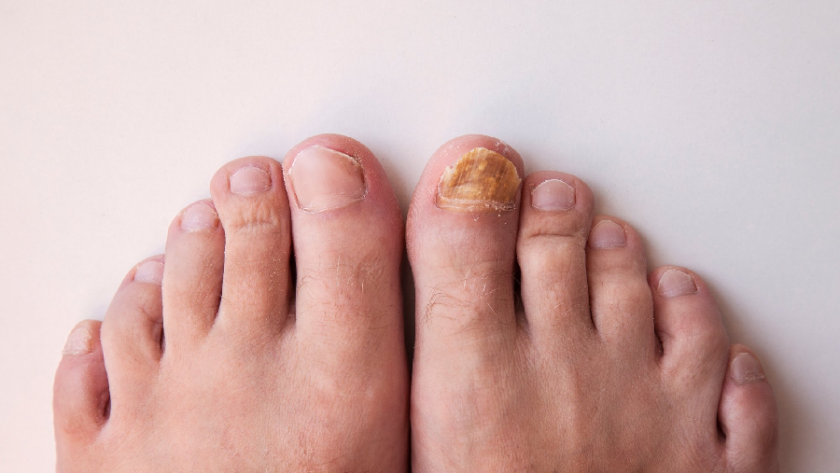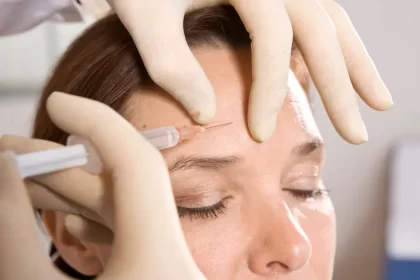Fungal infection, which is also called onychomycosis, is one of the very commonly occurring foot health problems. Generally, most people never visit any doctor or prefer to seek any treatment. The basic reason is awareness as most do not recognize this as an issue at all.
Generally, people tend to ignore this issue because this condition may persist for a pretty long time and does not cause any inconvenience or pain. Usually, this kind of problem is more prevalent among elderly people.
There can be a certain change in the color of the toenail that is noticed initially that may sometimes even look quite ugly too. Often that can also be quite embarrassing to expose your feet publicly.
People generally tend to ignore this issue because the changes in color are very minor and many people even fail to notice too. Sometimes, the blemish may also slowly spread too and darken your nail at times.
In several cases, often such changes in the color of toenails need plenty of time to cure if timely attention is not given during the initial stages. Actually, the infection happens underneath your nail surface that can eventually penetrate your nail.
Often this kind of disease may frequently also be complemented by a certain secondary bacterial infection that can spread in or around your nail plate.
Onychomycosis can be a fungal infection of your bed and plate beneath the nail’s surface caused by a variety of fungi prevalent in the environment. These fungi are basic parasitic plant creatures that do not need sunlight to grow since they lack chlorophyll.
Dermatophytes are a type of fungus that thrives on keratin, the protein material that makes up the nail. When the microorganisms take hold, your nail thickens, turns yellowish-brown or darkens in color, and emits a bad odor.
You will notice that debris may get collected under your nail plate and frequently, white marks start appearing on your nail plate. This infection can also spread further and get into your other toenails, fingernails, or sometimes even on your skin too. Some other contributory factors can be:
- Past history of having athlete’s foot
- Anxiety
- Improper cleansing
- Excessive perspiration
What can cause toenail fungus?
There is no likelihood that just a few amounts of exposure to a certain unclean environment will end up in fungus infection. Even if you walk barefoot a couple of times in a certain public shower, this kind of infection will hit your toenail.
Also, any single visit to any pedicurist is going to cause any infection. There need to be prolonged exposure to a certain contaminated environment to infect such a virus. Also, a certain group of individuals may often be more vulnerable to such a virus than others.
Preliminary treatment of any fungal infection
Often such toenail fungiare quite persistent and very hard to eradicate. As the first step of prevention, you must always keep your feet dry and clean for preventing this virus to spread further.
- After washing you must moisturize your nails
- Wash your hands too after touching the infected feet
- In public pools, wear shower footwear
- Keep the nails trimmed
- Wear absorbent socks
- Select shoes made out of breathable natural materials
In case your condition becomes too difficult to treat with your home treatment then prefer to see any doctor for laser treatment for toenail fungus.
The procedure of laser toenail fungus treatment
The laser toenail fungus treatment procedures have been cleared by FDA. This toenail fungus is a certain nail disorder, which has affected almost 20 percent of the population of the USA as per the statistics available.
This laser toenail fungus removal is going to use certain specific laser light wavelengths to kill the toenail fungus. The light will pass through your toenail, and that will cause no damage to your nail or even harm any surrounding skin.
Usually, for replacing your infected toenail it may take about 12 to 18 months and it will become more or less like your normal toenail.
Although toenail fungus laser treatment is a quite popular option, however, so far all the evidence that is available does not prove it to be much superior to any other cost-effective treatments. That also includes certain over-the-counter medicines and prescription topical medicines. However, the issue is that these medications can offer certain side effects too.
Even after 12 months of treatment, if the patient did not achieve remission of their status and if the visual condition of their toenails gets worsened then to get improvement in the result, laser treatment should also be coupled with various topical products.
Often these nail fungimay be quite stubborn and are very difficult to remove. As per the American Academy of Dermatology, clearing a severe infection is achievable, but achieving a healthy-looking nail will be difficult. Even so, you canat least expect your nail to improve in appearance and feel more at ease.
Nail fungus might resurface even after it has been eradicated. Lasers have only been approved by the FDA for the limited sign of “temporary cosmetic improvement” of onychomycosis. Avoid walking in barefoot conditions in public places and always use everyday antifungal foot powder to prevent the risk of more nail infections.
Because toenail fungus can be contagious, it is critical to seek treatment as soon as possible to prevent the condition from spreading to other nails.





